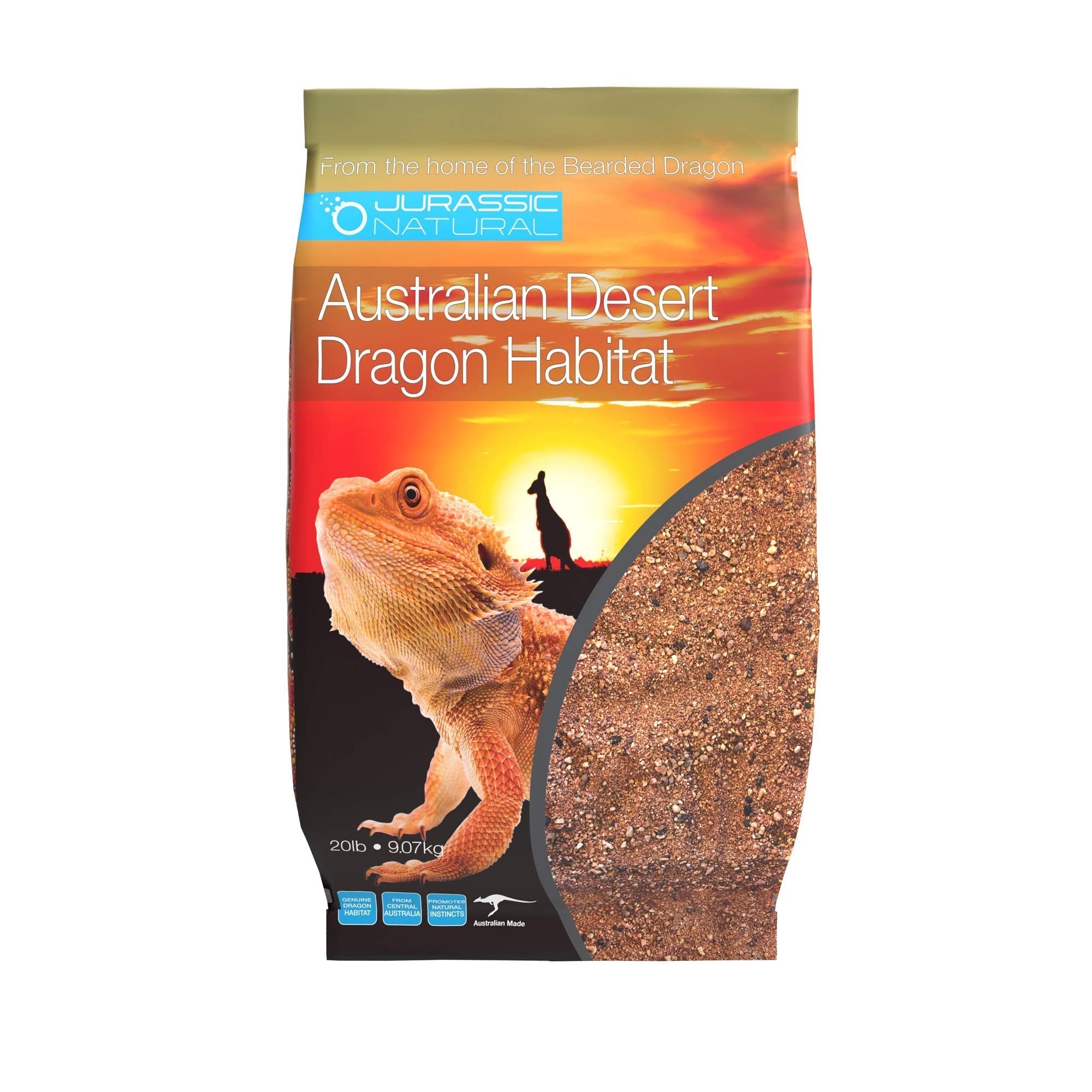When you’re designing a proper bearded dragon enclosure setup, one of the decisions that will impact health, enrichment, and maintenance the most is: what substrate to use. “Substrate” refers to the material right under your dragon’s feet—the layer of bedding or ground cover inside the enclosure. The right choice supports natural behaviors, while the wrong one can introduce unnecessary risk.
At Nexus Morphs, we believe that substrate isn’t just a cosmetic choice, it’s a core part of the supplies you need to get right. Here’s how to pick a good substrate, how much you’ll need, what to avoid, and how it fits into your overall enclosure setup.
How Much Substrate Do You Actually Need?
If you opt for a loose, packable substrate in a digging-friendly setup, you’ll need to plan for volume:
-
For an enclosure with a 4 × 2 ft footprint: plan on 80–120 quarts (approx 2.7–4 cubic feet) of substrate to create a 4–6″ deep layer.
-
For a 6 × 2 ft footprint enclosure: plan on 120–180 quarts (approx 4–6 cubic feet) for the same depth.
-
A deeper layer (4–6″) is useful if you want burrowing or digging behavior to be more pronounced.
Volume matters not just for aesthetics—the depth and width allow proper thermal gradients, hiding beneath substrate, and allow safe removal of waste without disturbing layering.
What Are the Best Substrate Options?
Here are categories of substrates from best to “use with caution”, along with pros, cons, and how they fit your bearded dragon setup.
Best (Loose, Naturalistic)
These mimic wild habitat, allow digging, and support natural behaviours when done properly:
-
Natural desert sand/soil mixes harvested or formulated to mimic the wild substrate of Pogona vitticeps (bearded dragon) in Australia. Our favorite substrate is the Australian Desert Dragon Habitat sand.
-
Examples: fine quartz sands (white, red, black), soil-sand-clay mixes.
-
When proper husbandry is in place (correct UVB, heat, diet), loose substrate does not inherently cause impaction—many cases attributed to poor husbandry rather than substrate alone
-
Pros: naturalistic look, digging/burrowing enrichment, more “behavior-rich” setup.
-
Cons: higher maintenance, higher cost, more attention needed to cleaning, checking for ingestion debris and substrate breakdown.
Better (Semi-Loose / Packable Alternatives)
-
Clay mixes (excavator clay), slate tile, firm sand that doesn’t shift too easily.
-
These substrates don’t allow as much burrowing, but offer a more natural appearance than bare tile or paper, while reducing some of the risks associated with loose sand.
-
Pros: stable surface, less substrate dust/ingestion risk.
-
Cons: less natural digging behavior, may require more frequent cleaning or maintenance if waste gets under hides.
Good (Sterile / Easy-Maintenance)
-
Solid, non-loose substrates—paper towels, newspaper, coarse tile, reptile mats—often recommended for juveniles, quarantine, or medical recovery.
-
Pros: easiest to clean, lowest risk of ingestion, good for monitoring and medical situations.
-
Cons: minimal digging/enrichment, less natural feel, may look “cheap” for a long-term display enclosure.
Substrates to Avoid—Why They Matter
Using the wrong substrate puts your dragon’s health at risk. Avoid these:
-
Calcium sand / vitamin-infused sand: Many issues of impaction reported due to calcium carbonate ingestion.
-
Wood chips, bark, shavings: ingestion risk, can cause obstructions, or hide parasites/mold.
-
Reptile carpets or felt: can trap toes, nails; hard to clean deeply.
-
Very fine play sand or dyed sand: dust, unnatural color may indicate additives.
Using a poor substrate choice undermines the value of all other supplies in your enclosure setup: lighting, heat, décor, hiding spots — the substrate failure cascades.
Choosing What’s Right for Your Setup
When deciding, ask the following:
-
Dragon’s age and health status: Hatchlings and very young dragons often benefit from solid substrates because ingestion risk is higher.
-
How much digging or burrowing you want: If you value behavior and enrichment, a loose substrate makes sense.
-
Your willingness to maintain: Loose substrates require more spot-cleaning, layering, full changes every 3-6 months.
-
Budget & aesthetics: Naturalistic display setups cost more; simpler sterile setups cost less.
-
Cleaning and hygiene plan: Even the best substrate will fail if waste builds up. Quick removal and regular replacement are key.
-
Health conditions: If your dragon has digestive issues, is under vet care, or stressed, a more sterile substrate is safer.
Maintenance & Cleaning of Substrate
-
Daily spot-cleaning: remove feces, uneaten insects, debris from substrate surface.
-
Full substrate change: every 3–6 months if using loose sand/soil mix.
-
Disinfection: With solid substrates (tile, mat), you can fully clean and disinfect; with loose, you’ll need to remove top layer where waste accumulates.
-
Monitor for ingestion: Watch for sand particles in stools or signs of impaction. While loose substrate isn’t automatically dangerous, the risk increases with insufficient husbandry.
-
Check deep-hidden waste under décor or substrate shifts: loose substrate may hide waste more easily.
-
Re-pack layers if your dragon digs deeply; maintain that 4-6″ depth if burrowing behavior is a goal.
Final Thoughts
Your substrate choice is more than a decorative decision—it influences behaviour, health, maintenance, and how all your other supplies perform (lighting, heating, décor, enclosure size). A well-designed setup supports everything: the right enclosure size, proper substrate depth, functional décor, optimal temperature/UV gradient, and safe enrichment.
If you ensure the foundation is solid (substrate + enclosure + supplies) your bearded dragon will get the best start in a habitat designed to reflect its natural lifestyle.

Share:
Bearded Dragon Enclosures: How to Build the Perfect Habitat